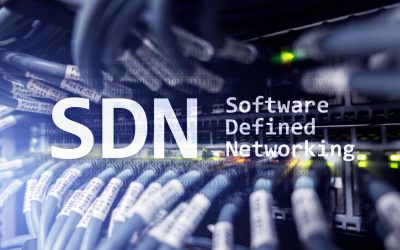Highlights:
- According to Data Bridge Market Research, the market for heterogeneous networks was estimated to be worth USD 28.76 billion in 2021 and is expected to increase at a CAGR of 13.49% to reach USD 79.15 billion by 2029.
- Modern mobile communication networks are referred to as heterogeneous networks or HetNet.
Networks and devices in our world have a history that we are familiar with. A smartphone and smartwatch are now commonplace, unlike the tiny cell phones we once used for calling only. As a result, although this technology is about networks, it is made possible by the network revolution. In all areas of development, the heterogeneous network will bring about a revolution.
The wide range of new network technologies used in today’s cellular wireless networks, including LTE Advanced, software-defined networking, heterogeneous networks, and fixed-mobile converged networks, are quickly moving from standardization to adoption, trial, and deployment.
Here, we’ll discuss Heterogeneous Wireless Networks to understand this newer technology.
What is Heterogeneous Network?
Interconnected nodes and various link types are features of heterogeneous networks. Such interconnected structures hold a wealth of knowledge that can strengthen one another’s nodes and links and transfer knowledge from one type to another.
WiMAX, Wi-Fi, EUTRAN, and other current radio access network (RAN) technologies are just a few examples of the many RAN technologies found in heterogeneous networks. It also features a variety of architectures, transmission methods, and base stations with a comprehensive performance gamut.
Also, the term used to describe contemporary mobile communication networks is heterogeneous networks (HetNet). Different cell types and access technologies are combined to create a modern mobile communications network.
A typical HetNet combines legacy systems (such as GSM and UMTS) with contemporary radio access technologies, such as LTE, and may also include Wi-Fi.
The market for heterogeneous networks has seen significant growth recently and is predicted to keep growing. During the anticipated period of 2022-2029, the global heterogeneous network market is expected to register substantial growth.
Analysis of the Heterogeneous Networks Market and Its Size
According to Data Bridge Market Research, the market for heterogeneous networks was valued at USD 28.76 billion in 2021 and is projected to grow at a CAGR of 13.49% to reach USD 79.15 billion by 2029.
Increasing mobile data traffic, cost savings from offloading mobile data, and a lack of spectrum are some of the main drivers propelling the growth of the heterogeneous network market.
The heterogeneous networks support mobile operators in enabling cutting-edge network deployment models while providing consumers with a high-quality experience. The market analysis focuses on several segments, including network type, deployment type, technology, and end-user verticals.
The adoption of heterogeneous network solutions is being driven by the following:
- The rising demand for high-speed mobile data,
- Increasing smartphone penetration, and
- The proliferation of data-intensive applications.
Also, the introduction of 5G networks and ongoing research into cutting-edge technologies like Wi-Fi 6 and 6E are propelling the market’s expansion.
Furthermore, during the forecast period of 2022–2029, the market growth for heterogeneous networks is anticipated to be driven by the lucrative opportunities for providing additional coverage that the rising mobile data traffic has created. It is critical to walk through its architecture and functionalities.
Working and Architecture of HetNet
HetNet’s device is a part of traditional macro Radio Access Technologies (RAN). It includes Wi-Fi functionality, small cells, and a wireless communications system that uses radio links to connect individual devices to other network parts. Explore the diverse functions of HetNet:
- It becomes virtualized and offers a platform for computational operation.
- It manages and conserves the internet’s resources, data, and energy in this way. Here, the “Self-Optimizing Network (SON)”—a network created on one’s own—works compulsorily.
- It enables the magnitude-scale network with a significant number of small cells.
- With the help of this SON, the network can self-regulate according to demand, environmental conditions, traffic patterns, and the location of the device, saving time, effort, and money. Consequently, this excellent service management is created.
- HetNet creates a general network architecture by combining Locator/ID split and Information-Centric Networking. This allows for the convergence of:
- Heterogeneous networks
- The alleviation of routing scalability
- The support of mobility
- Traffic engineering
- Effective content delivery
Compared to conventional cellular networks, HetNets offer a more thorough and adaptable wireless network deployment method.
Traditional Network V/s Heterogenous Network
Heterogeneous networks offer greater flexibility, scalability, and performance optimization at the cost of increased complexity and possible compatibility issues, whereas traditional networks offer simplicity and cost-effectiveness. The decision between the two is based on the particular needs and objectives of the network deployment.
-
Traditional Network
Most of the wireless cellular networks found these days are set up as homogeneous networks using a macro-centric planning process.
Deployment
A network of base stations with a predetermined layout and a collection of user terminals make up a homogeneous cellular system.
- All base stations serve roughly the same number of user terminals and provide unrestricted access to them. These terminals all carry similar data flows and have similar QoS requirements.
- Macro base station locations are carefully selected through network planning, and base station settings are correctly configured to maximize coverage and manage base station interference.
- The network depends on cell splitting or additional carriers to get around capacity, link budget restrictions, and maintain a consistent user experience as the traffic demand increases and the RF environment changes.
Challenges
- This deployment procedure is complicated and iterative.
- Finding a site for macro base stations with towers in densely populated areas becomes more challenging.
- Operators must use a more adaptable deployment model to increase broadband user experience broadly and affordably.
- Heterogenous Network
Increasing spectral efficiency per unit area can be increased by deploying heterogeneous networks with various base stations.
Deployment
Macro, pico, femto, and relay base stations are used in a heterogeneous network deployment.
- The low-power base stations increase hotspot capacity and close coverage gaps in the macro-only system.
- The macro-only system can use the low-power base stations to close coverage gaps and boost capacity in hotspots.
- When wireline backhaul is not available or is not cost-effective, relay base stations provide additional flexibility in backhaul.
Challenges
- The installation and purchase of various network equipment and infrastructure are required for heterogeneous wireless network deployment. The cost of skilled personnel and operational procedures may go up.
- Heterogeneous networks with multiple access points, base stations, and network nodes are common. Managing increasing user demands, traffic loads, and the number of connected devices becomes difficult. In such circumstances, careful network planning is required.
By improving resource coordination between base stations, server selection tactics, and interference management strategies, heterogeneous network systems can significantly increase user experience.
Conclusion
We have gone over the analysis of the heterogeneous network market, including its size, functioning, and architecture. We also compared traditional networks with heterogeneous networks and the difficulties they face.
All things considered, heterogenous networks offer a promising way to meet the growing demand for wireless connectivity and establish the foundation for future wireless communications.
Due to their ability to integrate different access technologies, optimize resource allocation, and improve overall network performance, HetNets are well-positioned to play a significant role in delivering users with high-quality and reliable wireless services in a world that is becoming more connected.
Explore more networking-related whitepapers for further insights.








































































